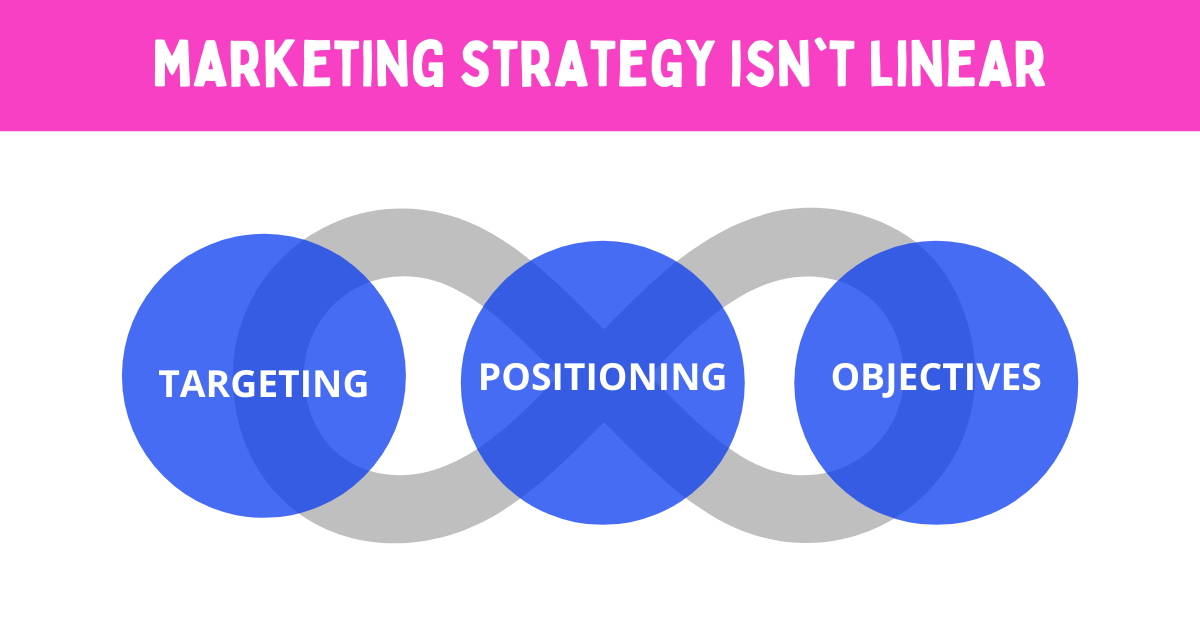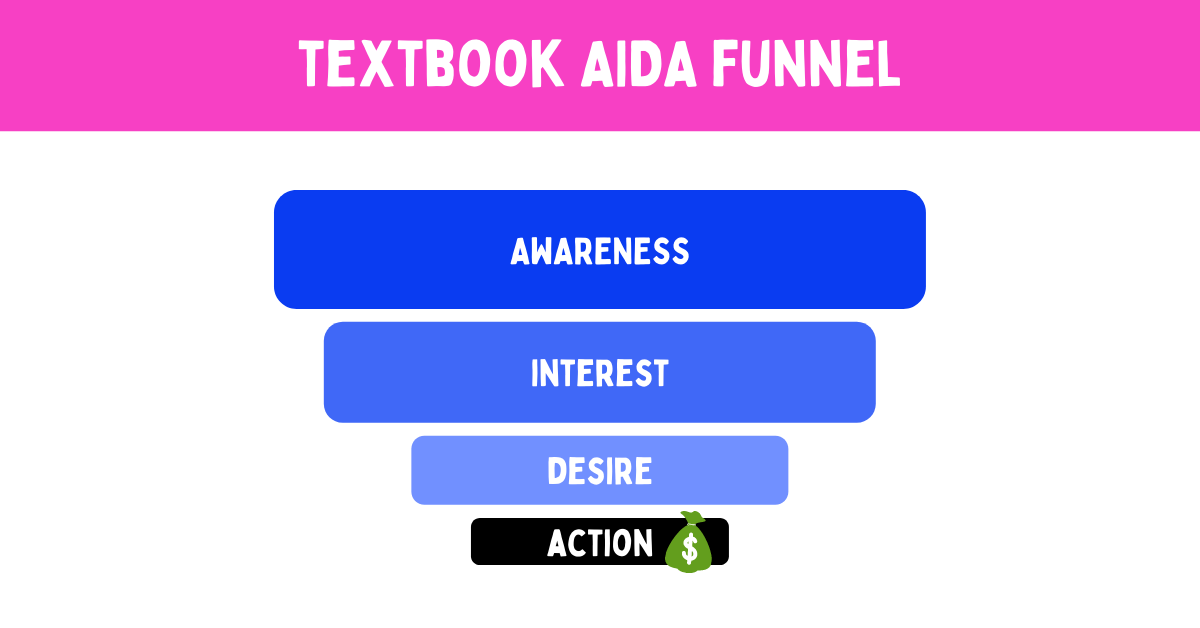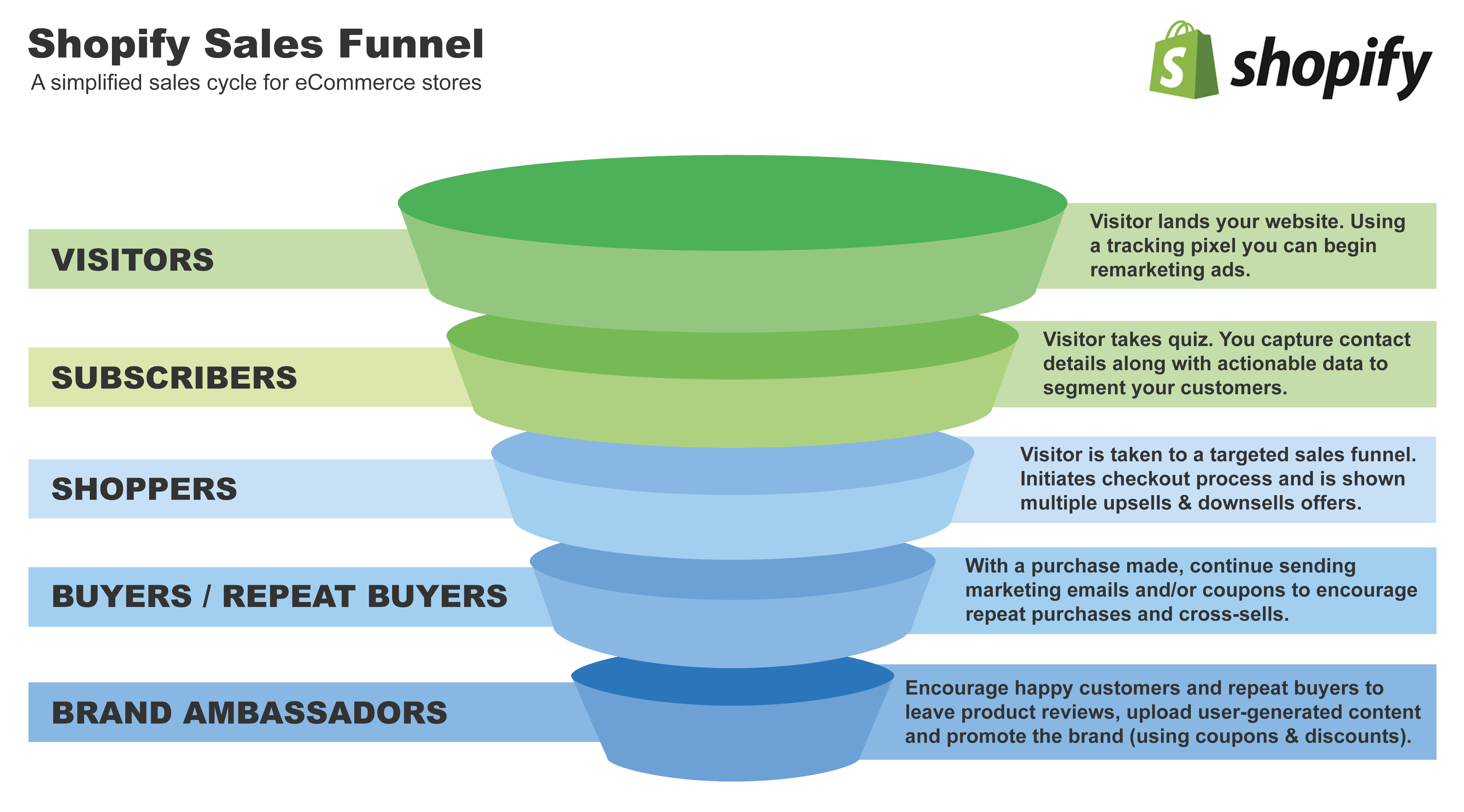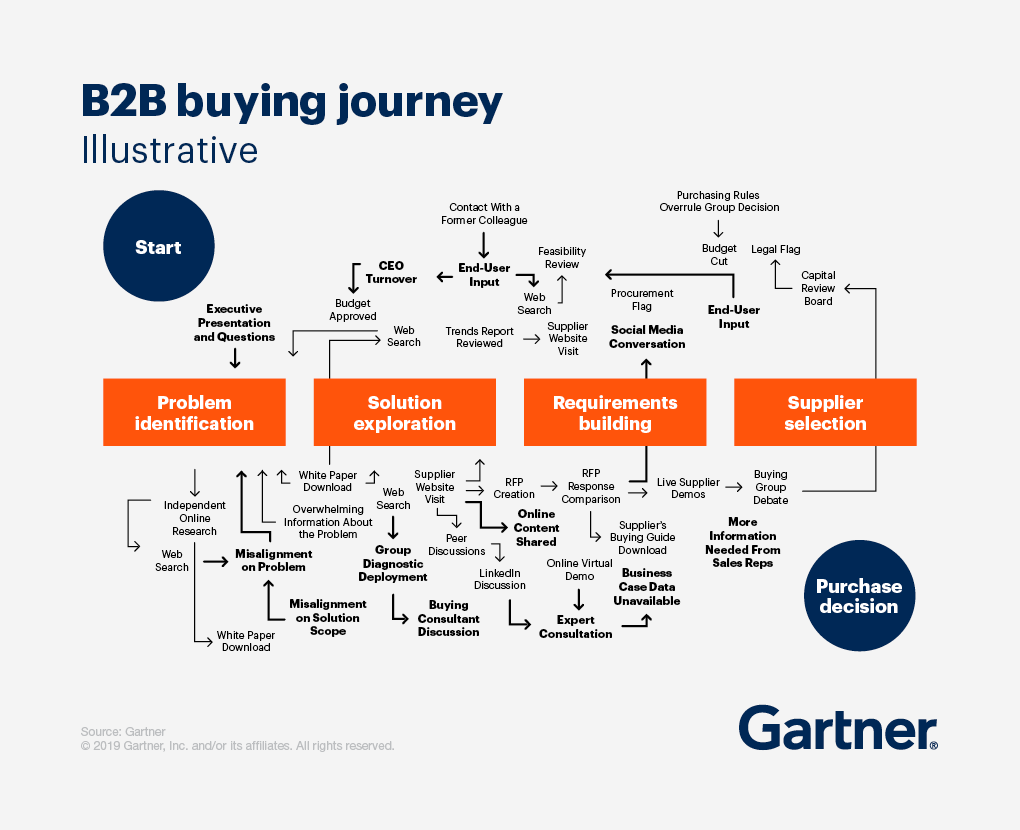The 4 laws of marketing objectives that will inspire your team

Now that you've done your market research, segmented your entire market, decided who you're targeting and how you're positioning to them, it's time to set some goals aka objectives.
Objectives are the final stage of your marketing strategy and in order to make it clear to your team what you're working towards, your objectives should be simple and clear.
But before we cover how to set objectives, let's recap how to get to this point in your marketing strategy.
Marketing strategy must answer these three questions clearly
There are three key questions you must be able to answer if you're going to nail your strategy:
- Who are we targeting?
- What is our position for those targets?
- What is my objective for each specific target segment?
Targeting, positioning, and objectives aren't linear

These three steps in deciding on a marketing strategy don't always happen one after the other in order. Yes, it makes sense to develop them one at a time, but each step informs the others.
- Your target segment informs the position you take and the objectives you set.
- A position may not fit your target perfectly, so you may have to revisit targeting.
- Your resources determine how realistic an objective is and you may be forced to rethink your targeting.
And so the virtuous circle goes. There's a lot of serious thinking and work to be done to get this right. Don't be afraid to back yourself and do it. You have my permission to move back and forth between targeting, positioning, and objectives. You're welcome.
The four laws of marketing objectives
1 - Be complex in order to simplify
This MIT Sloan Management Review article titled How to Develop Strategy for Execution put it best:
[W]hen it comes to execution, complexity kills.
It takes complex thinking and hard work to make a marketing strategy appear simple. Strategy is about getting your team, business unit, or entire company to do what's needed to win and grow. Complexity and rigor in determining your marketing strategy produces simplicity in objectives, which enables speed and conviction to put the strategy into action.
In his book titled On War, renowned Prussian General and strategic thinker Carl von Clausewitz wrote that strategy requires "intense mental engagement" in On War. I love what this means for marketers:
A marketer is not a tactician. You are a general who understands where you're fighting, who you're fighting, and how you're going to engage. That requires "intense mental engagement" and hard choices. Do the hard work to make your objectives appear simple so your team is confident in their action.
2 - Be choiceful
As you think about each question, be choiceful. Make sure your strategic planning is full of choices.
Targeting involves choices of who to target and who not to target. Positioning requires choices about what you're selling, which benefits and features you highlight, who you compete against, and more.
To be choiceful is to be selfish. Choose to focus on targets that best suit you. Choose to position in a way that gives you an unfair advantage. Choose resources that help you win.
Mark Ritson, a former marketing professor who now runs the Marketing Week Mini MBA programs, says "a sign of a good strategy is when competitors tell you that 'you can't do it that way'." Choose options and make decisions that benefit you the most.
3 - Let your data and diagnosis lead
Data and diagnosis allow you to make decisions. You know your market segments, which targets you can choose, the competitors you need to consider, and more. You have a lot of data.
If you're not happy with the objectives you have at this point, don't be afraid to revisit your research and segmentation data. Allow the insights from earlier in this process to inform and re-inform your thinking.
In case you missed them, there are posts on research, segmentation, targeting, and positioning.
4 - Be immune to tactics as you answer these questions
Tactification. Tacticitus. Impatientence.
Getting sucked into tactical thinking too early goes by many names, but no matter what you call it, allowing yourself to get sucked into tactics before you have extreme clarity in your strategy is a mistake.
Let's face it. Tactics are fun. The tools you get to use are fun. You will get to tactics! But first you must complete your strategy.
The tactics siren call will start in with little thoughts like "We could do..." and "Ooh, Ken tried XX in his last campaign and..."
You must push tactics away until the strategy has been decided. Lash yourself to the mast that is strategy and fight the urge to even think about tactics yet.
Finding objectives in marketing funnels

It's important to identify who you're selling to, what you're selling them, and how to sell it. Marketing funnels help you find high-leverage points where we can be most effective. This high-leverage point helps you find objectives that will help your business grow.
Build your funnel
Your marketing funnel is unique to you and your target segment. Don't copy the one above or take one from a textbook. Look at your target segment and think about the steps they go through to purchase.
There is a lot of talk about how marketing funnels have changed. They're compressed. They're not linear. They're a wild path of a billion touchpoints. I can tell you this: I've tried a lot of marketing attribution tools and services that promised to tell me exactly what customers' buying path is... none of them worked.
Keep it simple and build a linear marketing funnel that best represents how your customers buy. It will never be 100% accurate and that's ok. You're not trying to understand every single interaction every individual buyer has with your brand. That's impossible and slow and you have important shit to do.
Here are more examples of marketing funnels to help guide you in creating your own.


Use qualitative data collected in your strategic planning process to customize your customers' funnel. What did you learn from your research about how customers buy? Build a funnel to show that.
Analyze your funnel and conversion rates
Add conversion rates between each step of your funnel. If you don't know your conversion rates, dig into your data to learn them. The math is simple once you know the numbers of people who fit into each step of the funnel. How many people move from one step to the next?
Step B / Step A = Conversion rate
Mark Ritson teaches us to think of our funnel as a leaky pipe and marketers are the plumbers whose job it is to fix that pipe.
The strategic question is this: which holes will I aim to fix in the next 12 months?
In other words...
Where do I focus my marketing attention?
If your funnel is a leaky pipe, you want to look for these things:
- The biggest hole
- The easiest hole to fix
- The hole furthest down the pipe
Fixing the biggest hole (identified by finding the lowest conversion rate) will likely have the biggest impact on revenue, but you still have to consider if you can fix it. Do you have the resources, talent, time, money to fix it? If yes, great! If not, that's ok - you now have ammo to ask for more resources and there are other holes to fix.
The easiest hole might be a quick win. Who doesn't love a quick win with high impact? If you can find an easy hole to fix that increases a business metric (like revenue), go for it.
Reading the funnel from left to right, what is the hole furthest down the pipe? The further the hole is to the right, the higher potential impact because you're getting closer to where the money is.
Let your data and diagnosis guide you. Don't go on gut and guesswork. Let the data tell you where your holes are so you can figure out what you're capable of improving. Much like tactics can creep into your thinking at this stage, shortcuts and unimportant quick wins can too. Don't rush your funnel analysis.
The point is to focus your resources in order to have the most impact and make the most progress towards meeting your strategic objectives.
Writing strategic objectives
Management by objectives works if you first think through your objectives. 95% of the time you haven't. ~Peter Drucker
Clear, simple objectives drive organizations to success. It takes a lot of complex, hard work to find simple objectives. That's what Drucker is talking about. Do the work. Think through your objective. Back it up with data and diagnosis.
This is also important because, as Sun Tzu famously reminds us "Tactics without strategy is the noise before defeat." Your objective is to make your strategy easy to understand so your team can execute it.
Writing SMARTER objective statements
Michael Hyatt, an author and business owner, recommends S.M.A.R.T.E.R. goals. It's a good framework for summarizing objectives.
- Specific - your objective must identify exactly who you're targeting and what you want to accomplish.
- Measurable - good objectives include a benchmark metric to tell us where we are today and a target for where we'll be at the end of the period.
- Actionable - the objective should start with a verb like run, eliminate, grow, increase, etc.
- Risky - push the edges of your comfort zone. Objectives should stretch you and your organization, but not too much. Remember to also be realistic.
- Time-bound - set a time window when this objective will happen.
- Exciting - you and your entire team should be excited about this. There will be challenges along the way and an exciting, risky, edgy objective will help keep everyone moving through the challenges and over the inevitable dips in motivation.
- Relevant - objectives should be relevant to the vision and mission of your organization. Your company exists for a reason and your objectives should move you in that direction.
Another way to make sure your objectives are meaningful is to ask:
Can I assess our effectiveness and performance at the end of the year based on our SMARTER objectives?
If there isn't a clear way to measure success or failure, it's a shitty objective and needs to be rewritten.
Examples of good and bad objectives
Bad: We have more brand love among consumers because of our brand purpose and new digital toolset.
Good: Increase unaided awareness in the "accessible and easy" segment from 58% to 75% by December 2021.
Bad: Increase sales of our flagship product by 30%.
Good: Increase sales of Product XX in the enterprise segment from US$10M to US$13M by the end of Q3 FY22.
Bad: Our readership drives increased product signups from SEO.
Good: Grow organic blog traffic from 500,000 to 1,000,000 monthly visits (Objective 1) AND increase conversion rate of readers to free trial signups from .07% to 1.2% by November 2022 (Objective 2)
How many objectives should you have?
It's tempting to set a lot of goals and objectives. Who doesn't want to grow, grow, grow!? But simplicity brings focus and energy and fewer strategic objectives helps bring your resources to bear on the things that matter most to your business right now.
A study of Effie Award nominees shows the Goldilocks zone is 2-4 objectives. Fewer objectives don't help you grow enough and too many objectives dilutes your resources. Both make it harder to hit your targets.
Five important messages about objectives
- Complexity up front leads to simplicity in objectives
- Be choiceful throughout the process of setting objectives
- Be immune to tactics and avoid even thinking about them until your strategy and objectives are done
- Know thy funnel so you can make data-driven decisions about where to focus your energies
- SMARTER Objectives give you the clarity, simplicity, and drive needed to hit your targets
More in this series on marketing strategy:
- How epic companies like Nike and Amazon grab advantage with market orientation
- How to do market research for a startup (from a Saas product marketer)
- Market segmentation? Unwrap the best way to nail your marketing strategy
- Your next market targeting strategy must highlight these two things
- What is market positioning and where does it fit into your marketing strategy?
- Product (coming)
- Pricing (coming)
- Integrated Marketing Communications (coming)
- Distribution (coming)



